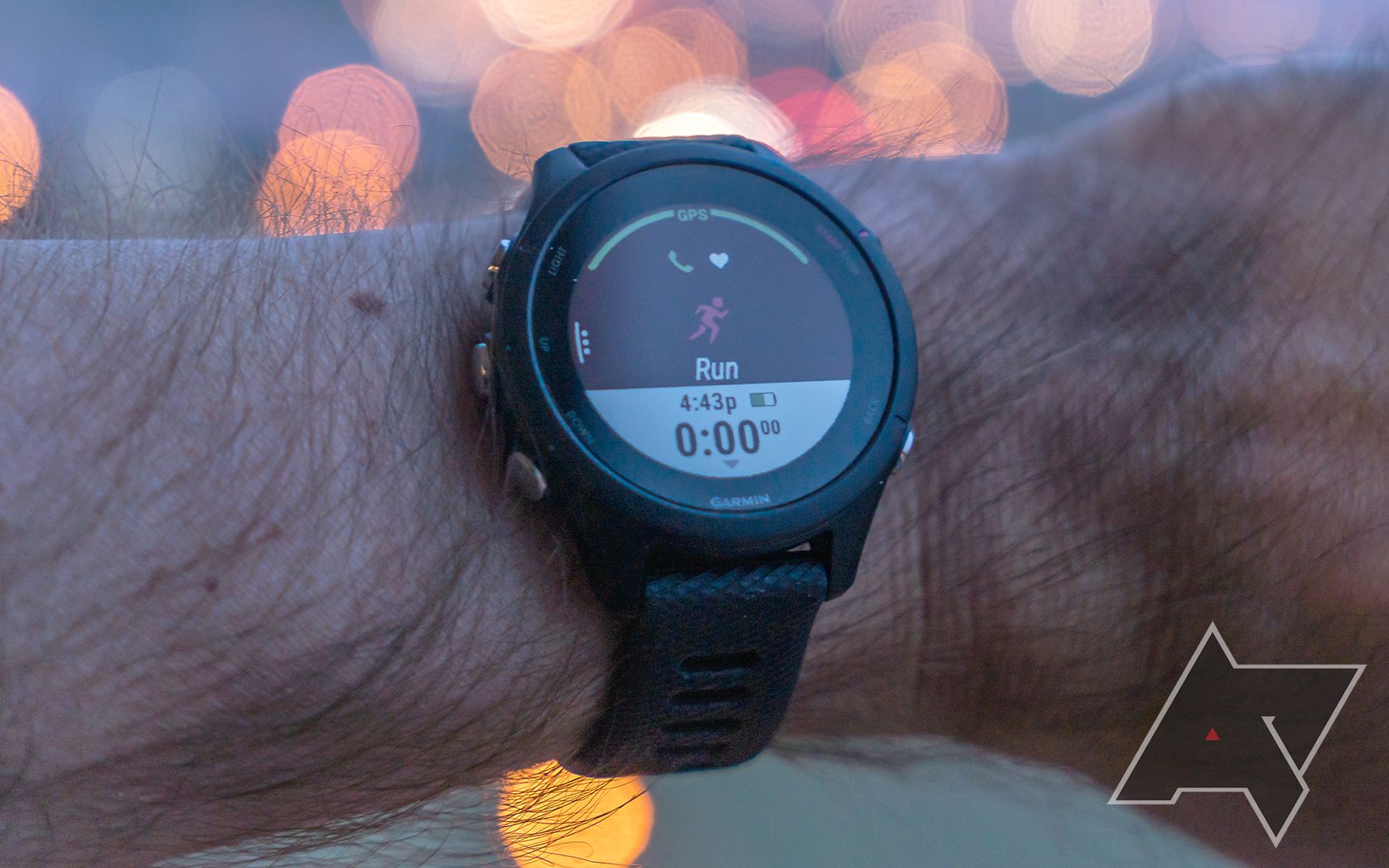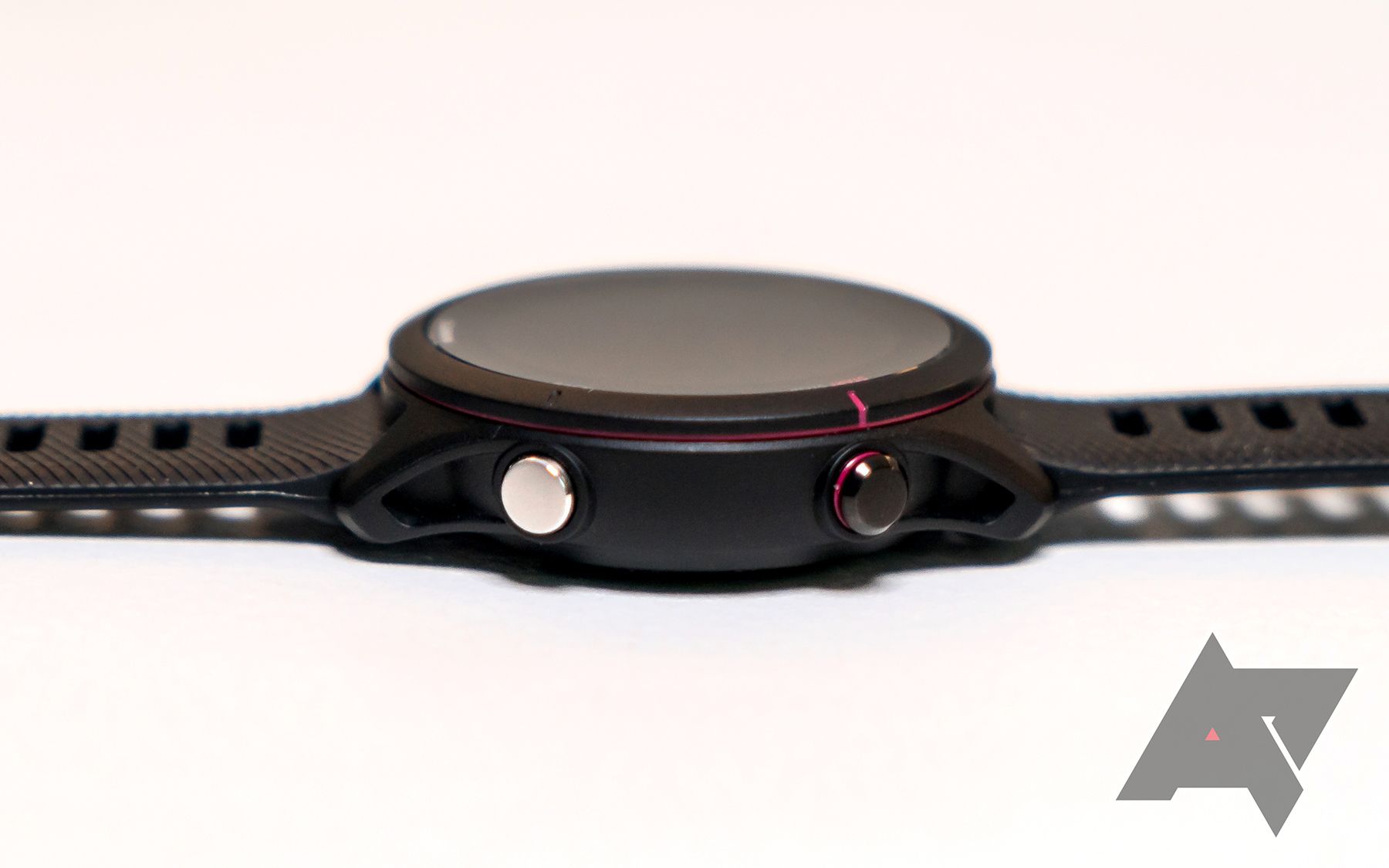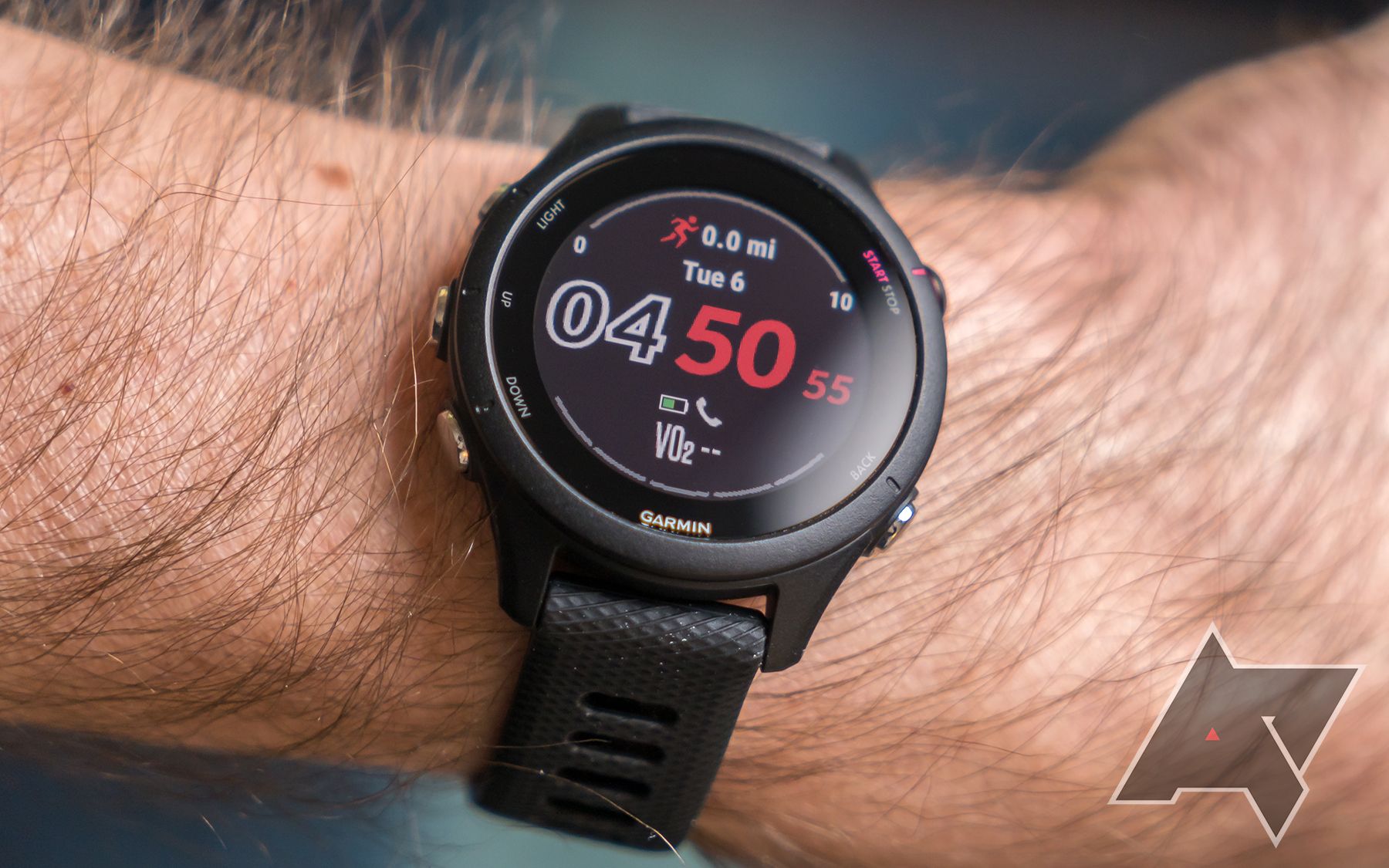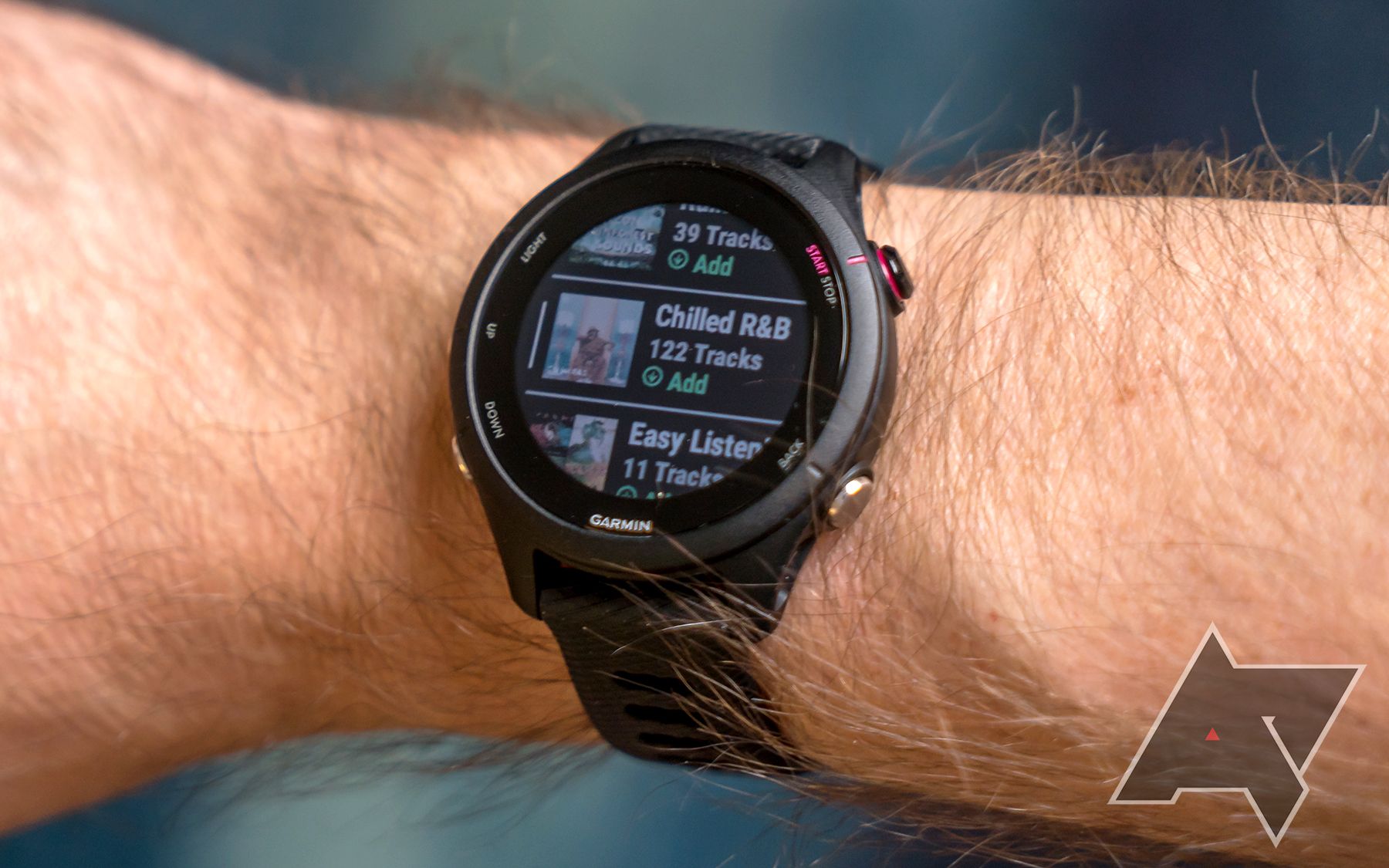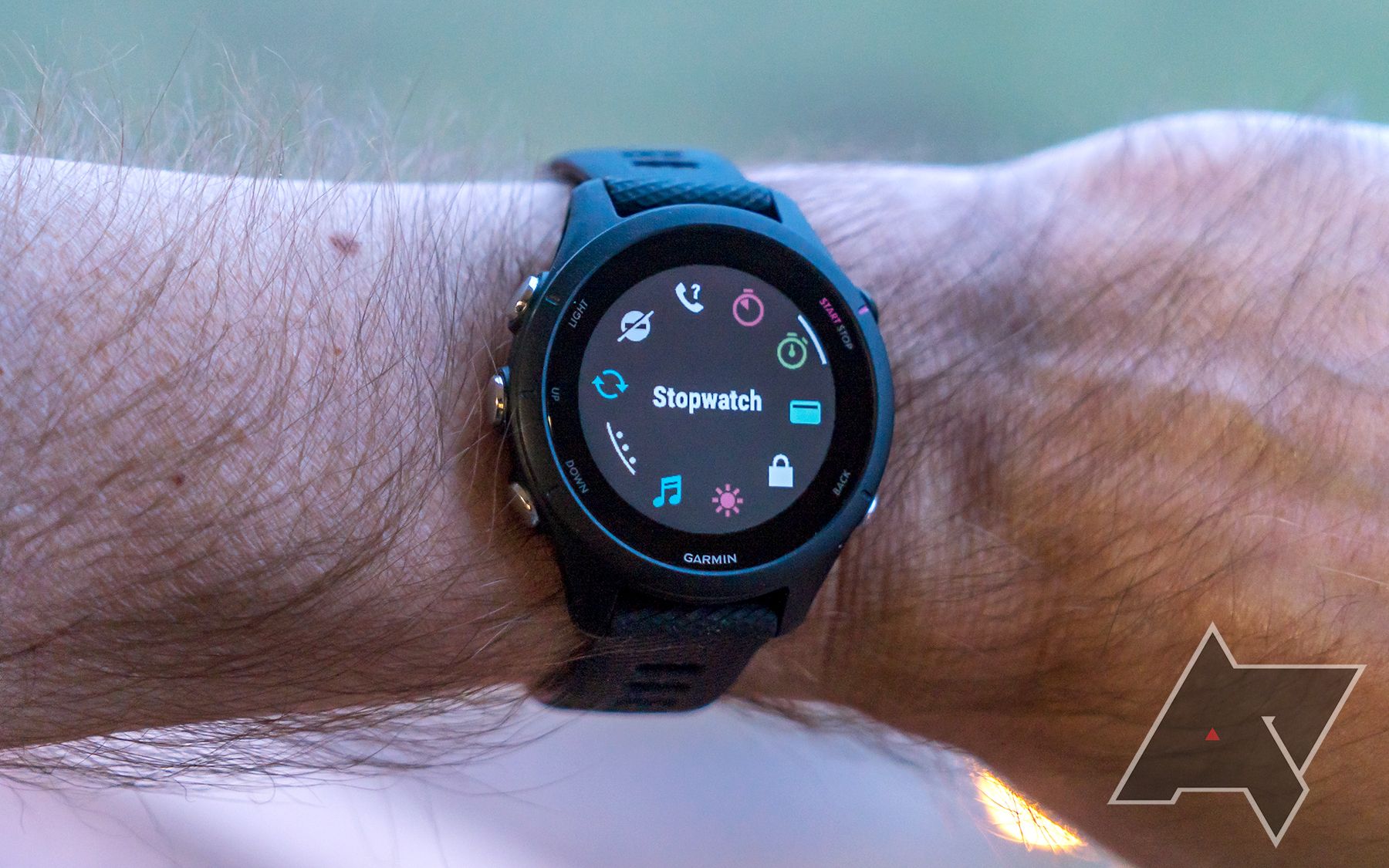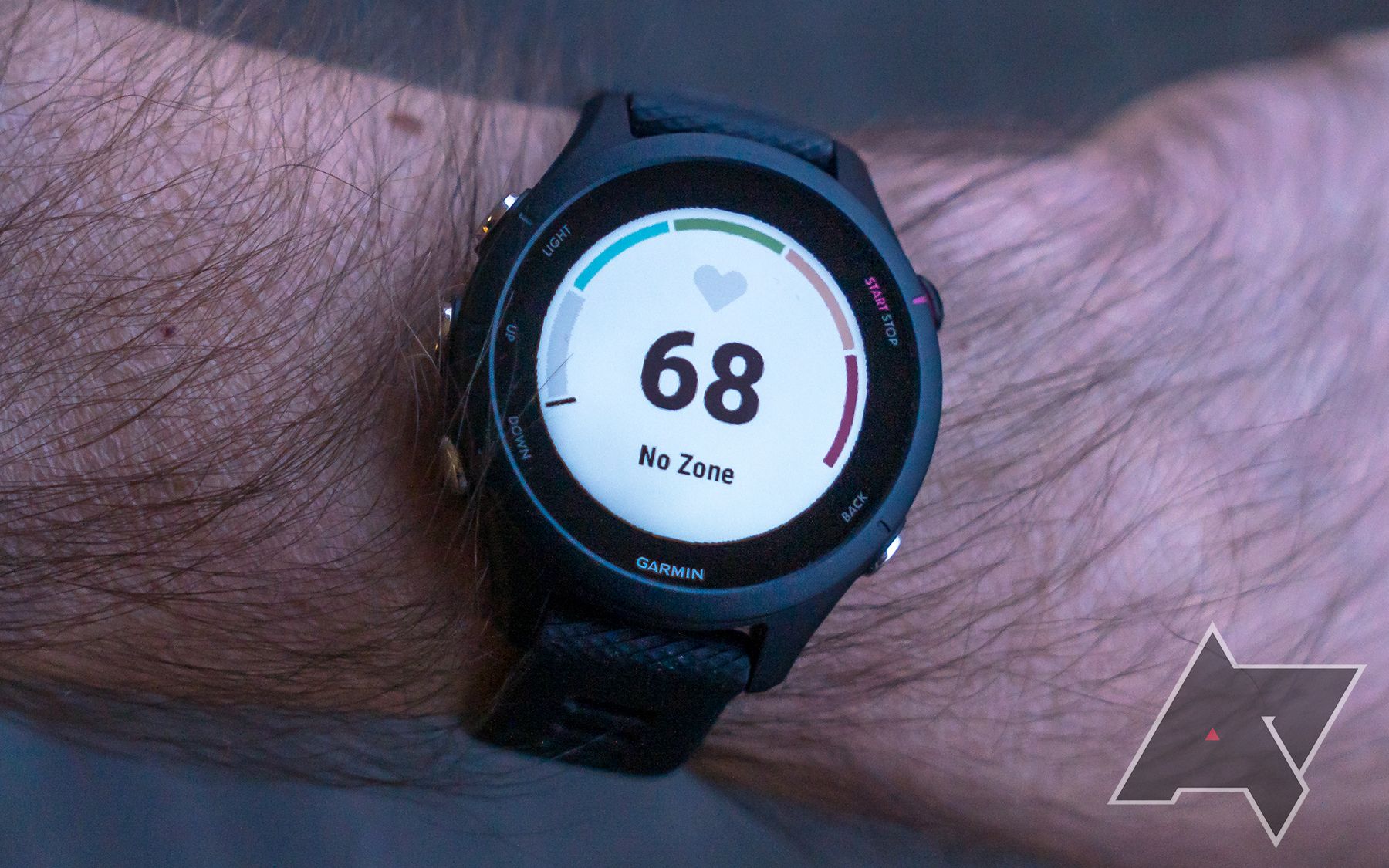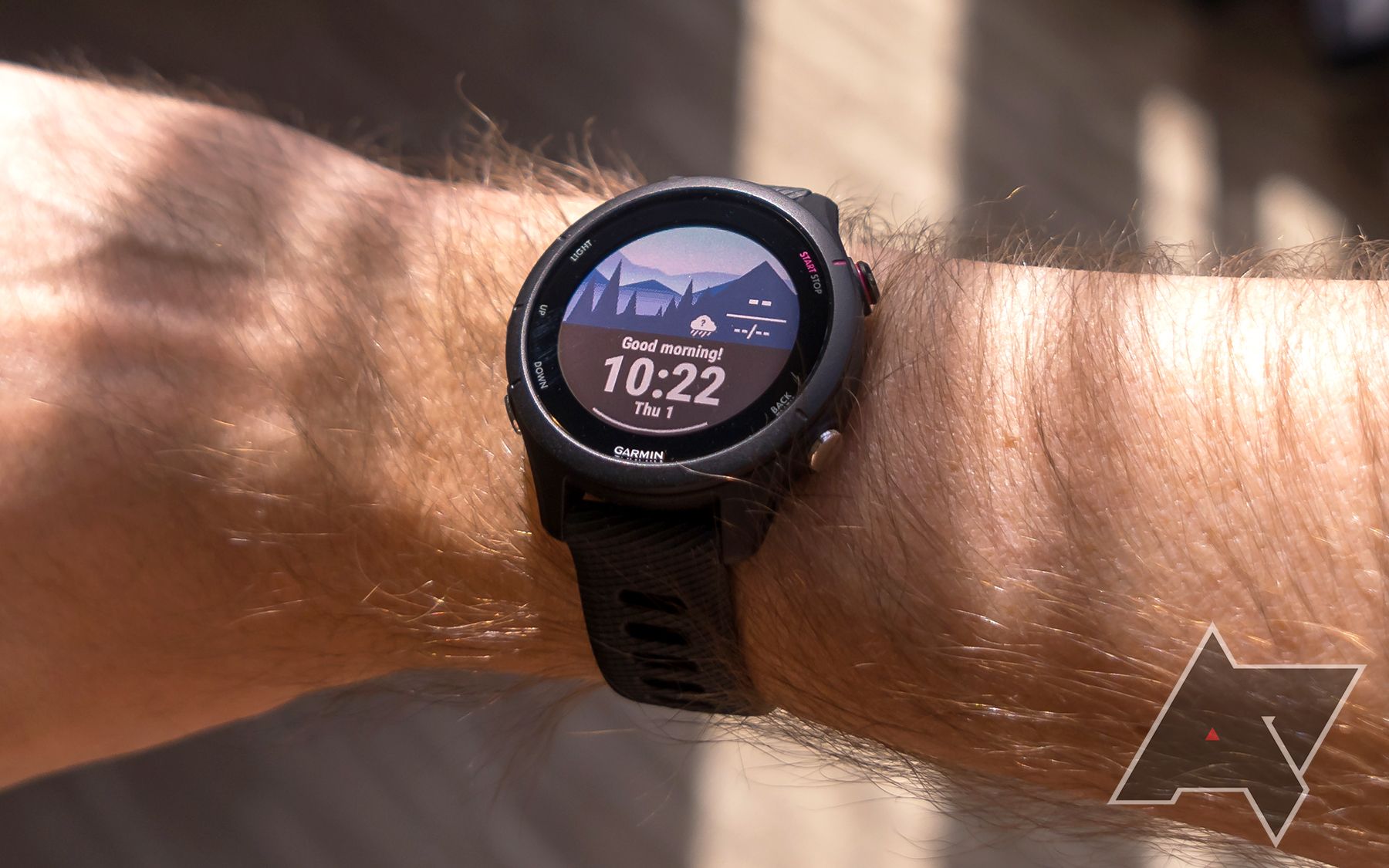Garmin makes smartwatches for the most active crowd, and goal-oriented runners might find that the Forerunner 255S Music is the right tool to stay on track. This isn’t the kind of wearable you strap on for leisure or the most basic movements — it's built for training, and Garmin thinks demanding runners will feel empowered with every step.
This iteration of the Forerunner 255 is a variant, with the “S” referring to the smaller 41mm size and “Music” referring to the Spotify integration for offline playback. It’s all business here, making the watch compelling with only a sliver of things unrelated to exercise and fitness.
The 255 S Music wearable is a good choice for those who want less flash and more substance. At $400, it's right in the thick of what the best smartwatches cost, and now more people can wear it with the expansion of size choices.
Garmin Forerunner 255S Music
- Heart Rate Monitor: Yes
- Color Screen: Yes
- Notification Support: Yes
- Battery Life: Up to 12 days
- Operating System: Garmin
- Onboard GPS: Yes
- Offline Media Storage: 4GB
- Customizable Strap: Yes
- SIM Support: No
- Display Size : 1.1-inch or 1.3-inch
- Water Rating : 5 ATM
- Smartphone Music Control: Yes
- Case size: 41mm or 46mm
- Colors: Black, White
- Health sensors: Heart rate, SpO2
- Price: $400
- Weight: Starting at 39 grams
- Mobile payments: Garmin Pay
- Workout detection: No
- Exercise modes: 30+
- Comfortable to wear
- Plenty of tracking stats and metrics
- Thorough customization options
- Good for triathlon training
- Decent Spotify and music integration
- Garmin Connect app adds extra features
- Not the most pleasing or intuitive interface
- Screen isn’t as durable as competitors
- Wearing this won’t make a fashion statement
- Don’t lose the proprietary charger
Garmin Forerunner 255S Music: Design and fit
Garmin likes to spread out colors where it can, which is why this watch only comes in Black and Whitestone, whereas the non-Music ones get the more vibrant shades. The two Music color options also apply to the 45mm size. Being smaller also means less screen real estate, which is why the Forerunner 255S Music has a modest 1.1-inch display with 218 x 218 resolution. If you want to go bigger, opt for the 46mm model with a 1.3-inch display (260 x 260).
Corning Gorilla Glass 3 isn't quite as durable as subsequent versions of the tough glass, so I would caution that long-term ruggedness may be hard to measure if you plan to "rough it" more while wearing it. The bezel is pretty solid, made of fiber-reinforced polymer, and the silicone strap is tough enough to withstand some punishment. All told, the watch has a 5ATM rating, so you can wear it while swimming or running in the rain if that's part of your workout regimen.
What struck me is that I barely noticed it, especially while sleeping. Weighing a lightweight 39 grams certainly helps. And with a physical button controlling the screen's brightness, the Forerunner 255S Music has a low-key profile ready to spring to action on demand.
There is no touchscreen here, though. Instead, the five physical buttons around the bezel navigate the interface. Moving clockwise, there is the start/stop button to initiate and end a workout, a Back button, the Up and Down buttons to cycle through menus, and the Light button to light up the screen.
Press and hold the Light button to bring up various settings, though not the actual Settings menu. For that, press and hold the Up or Down button and cycle down until the Settings menu appears. Otherwise, use the Garmin Connect app, which holds more of the features that you can activate or tweak, including customizing and personalizing your preferred settings. However, this can be a little confusing, as you'll need to control certain settings directly from the watch (like the watch face), whereas other settings are easier to control from the app, such as music and text responses.
Forerunner 255S Music: Features and Connect app
There's plenty to work with under the hood when it comes to setting up for activity. An improved heart rate monitor is a nice touch, along with a barometric altimeter and gyroscope. Built-in GPS — a must for runners and cyclists — captures route data to better know distance and pace. The depth is pretty extensive, and unless you already know your way around a Garmin watch, it's best to spend ample time figuring out where everything is.
That's where the app plays the key role in helping not only with the initial setup but also with other features involved. A vast majority of them hone in on workouts, training, and assessing performance, with the ability to dig deeper into how you're doing as you go along. By default, you get roughly 10 of the 30+ workouts available in the shortlist on the Forerunner 255S Music. It's much easier to tailor the list in the app, which will sync over changes immediately and update your list. Thing is, when you add one, it automatically goes to your favorites, so to change that, you need to go to Edit in the app (under Activities and Apps) and rearrange them how you want.
I'm just scratching the surface of the customization possible here, but you get the gist. Tap on any of the exercises, and you get to choose from a bevy of options on what you do or don't want to track or see during that specific exercise. For example, you can broadcast heart rate during a run and even set the distance for what would constitute a lap while running. It's a similar story with pretty much every other exercise available here.
Despite the clear focus on staying active, Garmin didn't want to ignore lifestyle features, as evidenced by NFC support to enable Garmin Pay and internal storage for offline music playback. You can get phone notifications, like incoming calls and messages, plus locate your phone in case you've misplaced it. App support is very limited, with mainly exercise or training apps standing out, like Strava and Komoot, among others. For music, Spotify isn't alone, as you can also get Amazon Music and Deezer to play some tunes. Accuweather and Starbucks are two others.
To find these more easily, you'll need to download Garmin Connect IQ, which lets you browse and search for apps or watch faces and then sync them over to the watch. It would be better if Garmin just amalgamated the two apps into one platform, but for now, you will need to do a little back and forth.
Forerunner 255S Music: Exercises and tracking
Much like the settings feel extensive, so do the tracking tools and metrics while active. If you're looking to compete in a triathlon, the Forerunner 255S Music can oblige. It's already one of the exercise choices by default, and you can take it further in the app by setting up a training plan under Garmin Coach, no matter your experience level. Tap the upper left menu in the app, and there's plenty more to wade through. Check health and performance stats and add gear, like your shoes, bike, heart rate chest strap, or whatever else that may be relevant to your workout.
But again, this is but a sample of what's possible, where the Connect app also serves up challenges and countless workouts you can download to the watch. For example, the Training and Planning section is like an endless reservoir of intricate workouts and data — it feels like Garmin tailored it for whoever wants to use them. Another good example is PacePro, which creates a custom race-pacing strategy based on the course you're going on and the goals you're looking to achieve.
One of my favorite features was the Body Battery, which accurately represented how I felt about doing a heavier or lighter activity on a particular day. In addition, heart rate monitoring proved one of the most accurate I've seen in a smartwatch, pegged almost exactly to a chest strap.
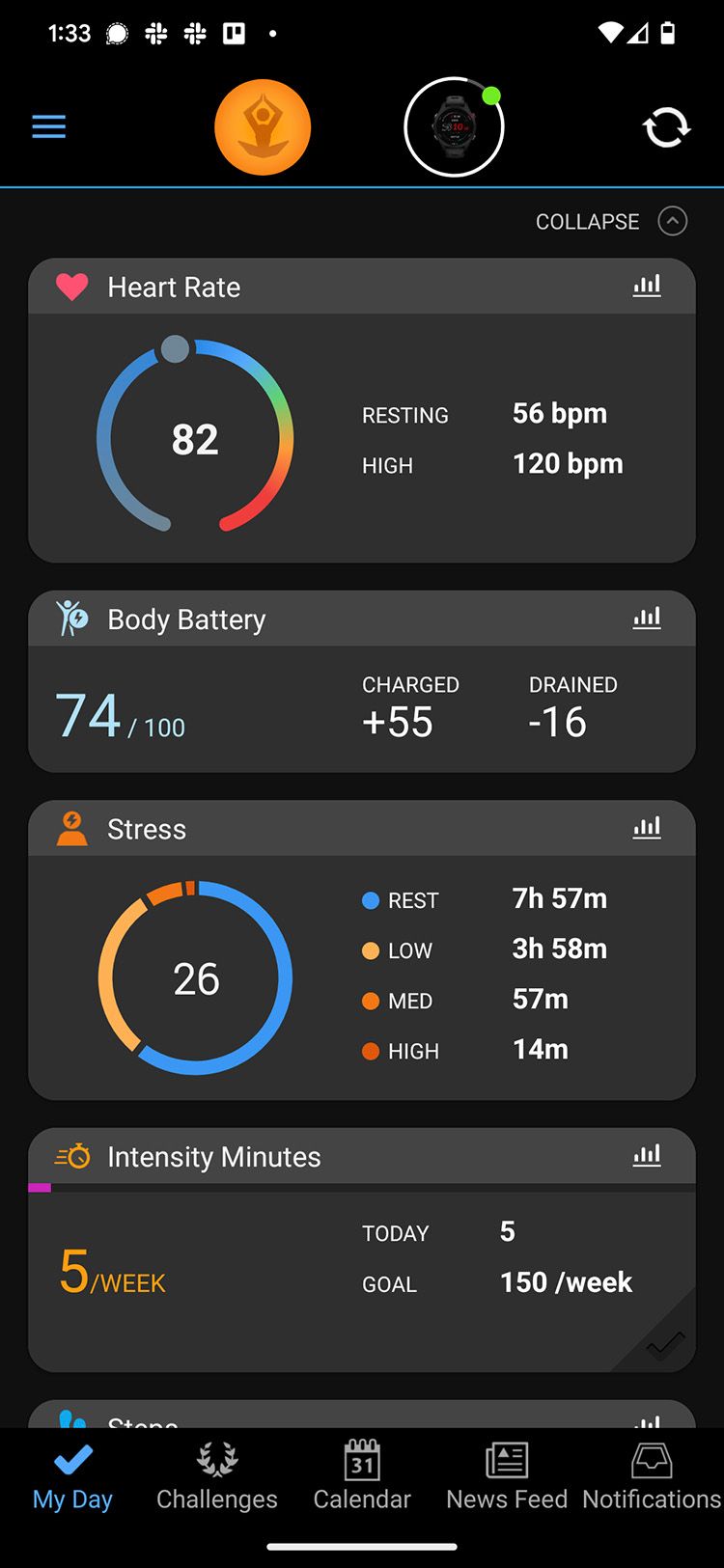
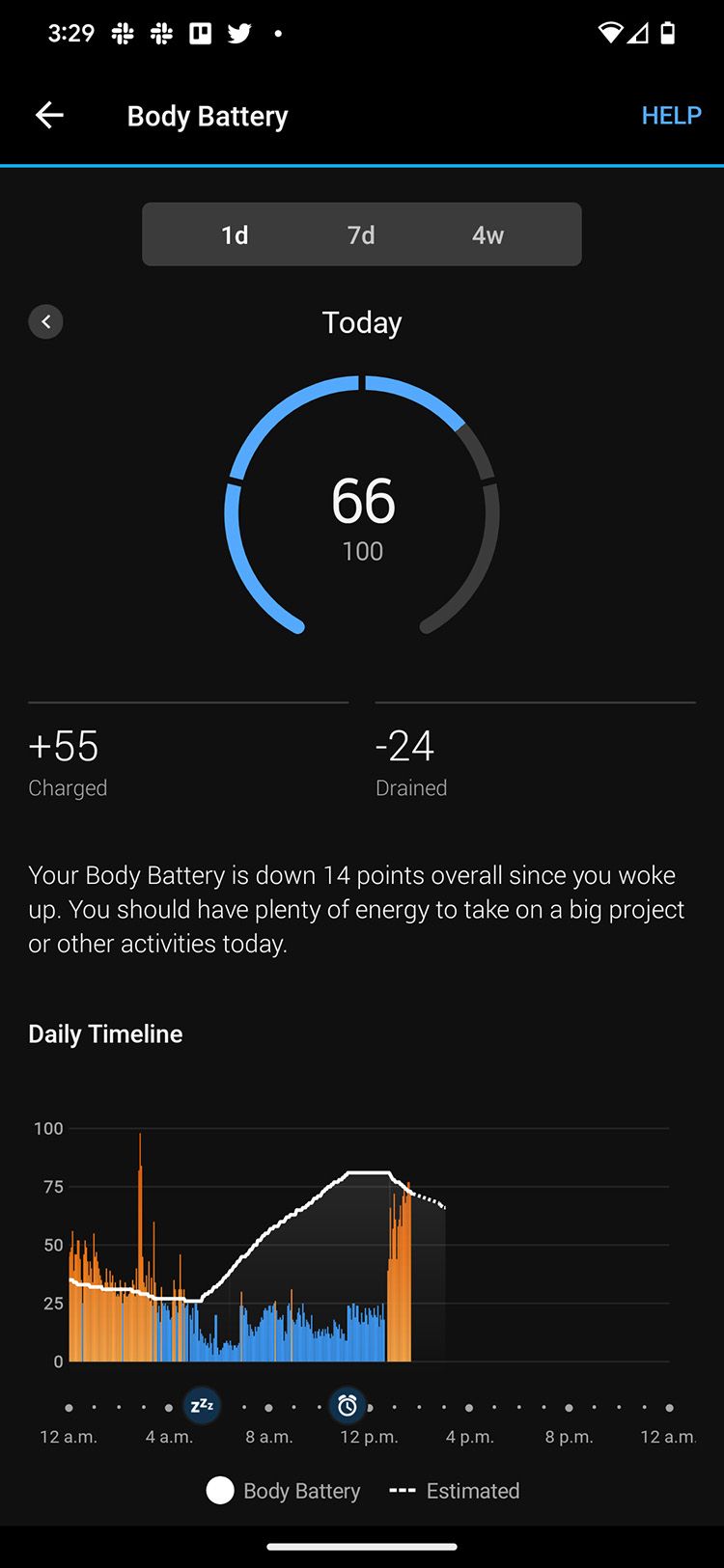
Garmin also brought over its Morning Report from other devices to give you a snapshot of your sleep quality and how well you've recovered for the day ahead. It does this every day, not just after you've worked out, so it doesn't take long for it to feel like part of your day, glancing over when waking up to see the stats.
I used the watch primarily for walking, hiking, and cycling, whereas I had an avid runner friend try it during runs to prepare for a half-marathon. The depth and accuracy struck both of us — although, after owning a more mainstream smartwatch, she felt underwhelmed and confused by the Forerunner 255S's interface and physical buttons. The lack of input led to a lack of knowledge and interaction, forcing her to look at the app for information after the run ended.
Hearing that feedback only reinforced what I suspected: the Forerunner 255S Music requires time and effort for newcomers to understand or appreciate. Garmin has improved its software, but that becomes clear only when you feel comfortable with the controls and features.
Forerunner 255S Music: Battery life
Garmin rates battery life at up to 12 days for the Forerunner 255S Music (and 14 days for the larger 255 Music). That's mostly accurate, scaling down to about a week or so with regular workouts and tracking. Leave GPS on at all times, and you'll barely hit a full 24 hours, putting it in line with other smartwatches that don't offer full GPS capabilities. Nevertheless, those are solid numbers by any measure and ideal for daily routines and meeting exercise goals.
The clip-in proprietary magnetic charging cable feels out of place in an era where wireless charging is increasingly the norm for smartwatches, but Garmin preferred to stick to what it's done before. Had it thrown in solar charging, like the Forerunner 955, that would've made things interesting — but also considerably more expensive.
Forerunner 255S Music: The competition
It's easy to like the depth the Forerunner 255S Music provides, and it's clear who the best target is to wear it. That only becomes clearer when you take the time to learn the features and tailor them to what you want them to track for you.
It is in a tight market, though, if you're looking for alternatives. The Polar Pacer Pro is $300 and offers many of the same tracking features, especially for runners. Or you might get lucky and find the Suunto 9 Baro cut down from its $500 price tag. As is, the Forerunner 255S Music is one of the best you can wear on your wrist for meeting active goals.
Forerunner 255S Music: Should you buy it?
If you've used a Forerunner watch before, the 255S Music may feel like a bigger step forward, given its predecessor came to market back in 2019. Better heart monitoring, plus the barometer and altimeter, prove more accurate elevation to help make this watch a solid performer. And Spotify works well for audio playback with wireless earbuds or headphones.
The real value proposition is how seriously the watch takes workouts. Avid runners can take it as seriously as they want, particularly with triathlon and marathon training, going as far as the ability to share it with others through the Connect app. That's great if you're working out with friends or as part of a team. And it's not exclusively for runners when you consider how much the Forerunner 255S Music offers for all the other available exercises.
It may lack the flair of a smartwatch from Apple, Google, or Samsung, but you're not buying this one for its fashion sense. I saw it as more of a tool than a toy, which is why I wouldn't recommend it to anyone who doesn't exercise regularly.

